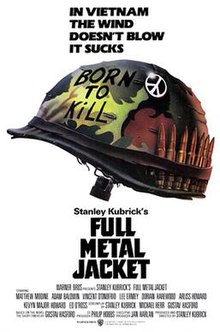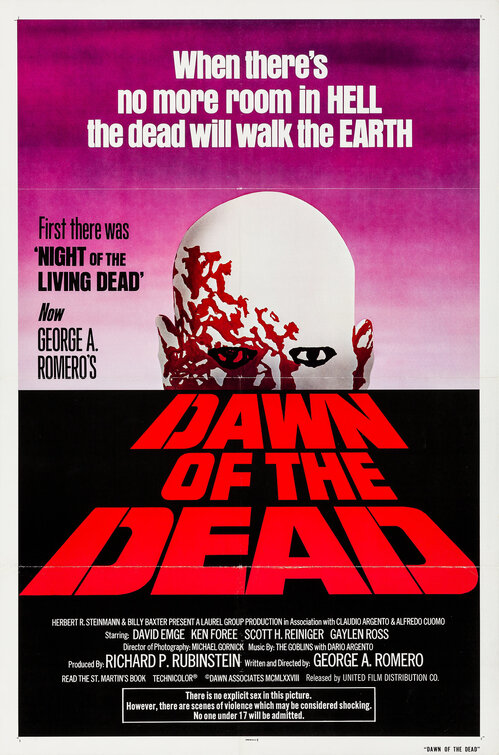What is ideology and how can it be implicit vs. explicit?
Ideology is a term that refers to the messages and values that a piece of media tries to communicate to the viewer. Explicit ideology is the definite message that a director/producer/writer demands to be communicated to the audience. Implicit ideology is a looser, and more debatable form of ideology. It's an ideology that can be gathered through analysis and argument.
Personal Ideologies and the Enjoyment of Film: Think of a film that you enjoy and know well. Consider which characters you like. Analyze your favorite character using these useful questions to bear in mind when considering ideology are:
Changing Ideologies: Why would the ideologies of a given era or time period change the way a narrative is presented to its audience? Can you give an example of a film narrative that has changed over generations?
Ideology and Expectations;Give an example of an a actor that presents a predictable ideological package that studios are quick to use. List as many of their film roles as possible – noting the particular actions/dialogues associated with the character that they play. Make a list of the five adjectives that you think best capture their typical role. Produce a detailed description of what you think their next role will be like.
Charlton Heston
Ben Hur - Ben Hur
The Ten Commandments - Moses
Antony and Cleopatra - Mark Antony
Leading, Adventurous, Courageous, Honorable, Influential
If he were to star in one more movie, he would probably play a mature man. He would be a typical role model, and possibly support the ideology of doing more for others than yourself
Ben Hur - Ben Hur
The Ten Commandments - Moses
Antony and Cleopatra - Mark Antony
Leading, Adventurous, Courageous, Honorable, Influential
If he were to star in one more movie, he would probably play a mature man. He would be a typical role model, and possibly support the ideology of doing more for others than yourself
- What is it that you like about them and what has the filmmaker done to encourage you to feel this way?
- What values am I being asked to share or reject?
- How are my feelings being manipulated to prefer one viewpoint over another? (Camera placement/movement and editing are particularly important here.)
- Why might a filmmaker want me to prefer one viewpoint to another?
- What are the artistic/financial consequences of filmmakers trying to predict what an audience might approve/disapprove of?
- What are the artistic/financial consequences of filmmakers trying to predict what a film's financier might approve/disapprove of?
Boondock Saints - Connor MacManus (Sean Patrick Flanery)
Connor and his brother were motivated to 'clean up the city' of all the silly mafia gang scum. I admire how they stick up for their morals and values even after given so much power and recognition. When making a hit , they stick with their Irish traditions, place pennies on the eyes of the dead, recite their family prayer, and pay their respects by visiting church afterwards. Debatable values of his actions include, family pride and value of friendship. Editing techniques help manipulate my viewpoint in certain cases. The editor uses slow paced shots when a value is being conflicted or reinforced. For example, during the battle scenes it's mainly fast match-action cuts/montage, but when that's over and they pay respects, the pacing slows down.
Ideologies change in accordance to society of the time. Depending on what the audience wants to see, what they will interpret and learn from the film will change. When ideology changes, interpretation of certain films will change. For example, in southeastern Asia, certain films had censored their government and military involvement in their own countries and other countries in their films. Over time, these governments soon grew to become a topic of interest for some films.
Widespread and common ideologies can subliminally affect our own behavior and beliefs. Films tend to show the general content of examples when pertaining to a common ideology. For example, one can relate to a certain film when they themselves have been put in a similar situation. Films can help determine our perspective of 'common sense' and our ability to 'know right from wrong' by depicting these situations and having our protagonists values nobly reflect what should be done.
Suspension of disbelief is a term used to explain how an audience accepts certain aspects of cinema that seem to go against reality. Ideology plays a role in this by determining whether breaking reality is acceptable when portraying a certain ideologies. For example, in science fiction films, there is normally very little knowledge on whether half of the scenes we see would be possible in the real world. The reason people don't critique the possibilities is because the film has to stay within the rules for films of the sci-fi genre. Like in Star Trek, Star Wars, and other space films, intergalactic travel isn't highly likely around our day and age. This is also covered by having these films set tons of years into the future, allowing imaginations to roam and explore the possibilities of the future.
Ideology & ownership: Does the financial support of a film or the ownership of a production company influence the ideology represented in a film? Explain with an example.
Financial support does give a movie its potential. High budget movies are expected to be 'the next big thing' out of cinema, or at the very least please their audience. However, spreading ideology is determined by the company itself providing the funding. Becoming well known and having more popularity would mean portraying the ideology behind their film with great success. So funding can cause bias in which way the ideology leans toward. For example, if one's going to advertise their film so widely and successfully, they'd want many audiences to accept it. For it to be accepted, it must appeal to the majority of audiences to gain the most money. Say if a low funded film is shot with an uncommon or opposite ideology than the norm, then it would see very little success in Hollywood cinema unless the film style is nothing short of revolutionary.








